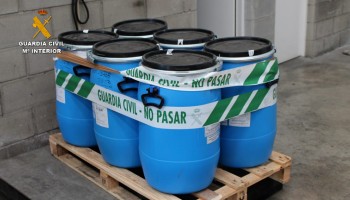According to Eduardo Rincon, chief of security at fruit company Tecbaco -- a supplier for multinational Dole -- members of this criminal group have been arriving at farms in Colombia's banana-growing region unarmed, offering money to site coordinators to pack drugs into shipments bound for the Caribbean port of Santa Marta, reported El Tiempo.
Security cameras have been installed at packaging sites and at the port of Santa Marta, and police say they will begin inspecting farms in the area. However, Rincon says that in some cases drug traffickers follow banana packers en route to the port and force them to stop and load cocaine into their shipments.
Authorities believe that the method of inserting cocaine into containers at the banana farms is common, since in at least one recent case a shipment seized had its original seals intact. The packaging sites are often located near highways, facilitating the exchange between the banana workers and the drug traffickers.
Bananas make up 80 percent of exports leaving Santa Marta, and police have seized over two tons of cocaine in banana shipments destined for the Bahamas and Belgium so far in 2014.
InSight Crime Analysis
Hiding drug loads among fruit shipments is a common practice for drug traffickers both in Colombia and other countries in the region, such as Ecuador. In one recent case, a "logistical error" by traffickers sent 140 kilos of cocaine hidden in cases of bananas from Colombia to five supermarkets in and around Berlin, Germany.
SEE ALSO: Colombia News and Profiles
It has been reported in the past that traffickers commonly use a method known as "gancho ciego" (rip-on rip-off) -- whereby shipping container seals are removed and replaced -- to hide cocaine inside. Such tampering can occur inside ports or once the ships are at sea.
Yet this most recent report highlights how consignments also frequently arrive at export points already doctored. While this may imply a less brazen level of corruption than gancho ciego, it would nonetheless require some level of criminal infiltration among port officials, with such shipments obvious targets for searches.
However, as highlighted by a 2013 EU and Ameripol report effective monitoring of shipping containers remains a region wide problem and a very small percentage of US- or Europe-bound shipping containers are inspected.
By Mimi Yagoub. Used with permission of InSight Crime







